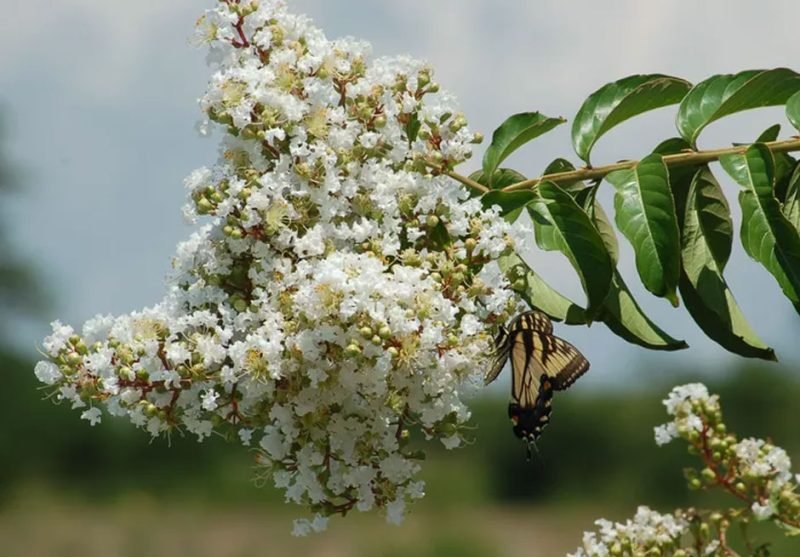
White crape myrtle, also known as Natchez crepe myrtle, is a popular tree in Southern states like Georgia and South Carolina. While it can be grown in the North, gardeners will need to adjust their expectations, depending on the variety they choose.
Taxonomy and Botany
White crape myrtle belongs to the Lagerstroemia x Natchez family, a hybrid derived from crossing L. indica with L. fauriei. It is naturalized in the Southeastern U.S., and Natchez is the cultivar name. This deciduous shrub or small tree is known for its white blooms and reddish-brown bark that peels like a birch tree.
Sun and Soil Needs
White crape myrtles prefer full sun and well-drained soil. They grow vigorously in the South and are cold-hardy to planting zone 6, making them suitable for many northern locations. Exposure to full sun can help prevent some of the less mildew-resistant varieties of crepe myrtle trees from succumbing to disease. Soil pH should range from 5.0 to 6.5.
Plant Description
In the South, Natchez crepe myrtles grow as trees and can reach over 30 feet tall. Their foliage turns reddish-orange in fall, and the blooms last from mid-summer to fall, attracting butterflies. The brownish fruits persist through winter.
Care Tips
Do not over-fertilize Natchez crepe myrtles, as excessive fertilizing can reduce blooming and lead to winter injury. These plants are prone to brown leaves, which can be caused by various reasons.
Disease and Pruning
White crape myrtles are highly resistant to mildew. However, pruning out branches that cross over other branches promotes airflow and reduces susceptibility to mildew. Aphids are a common problem with this specimen, and honeydew drops from aphids can cause unsightly stains.
Pruning should be limited to thinning to open up the plant, and the best time to prune is early spring since the shrubs bloom on new wood. Remove spent flower heads throughout summer (a process known as “deadheading”) to encourage continued blooming. Remove any suckers that appear, and transplant volunteer seedlings to avoid extra weeding.
Other Types
Many cultivars of crepe myrtles, in addition to Natchez, have been developed and marketed, including dwarf varieties like Bicolor (pink) and Acoma (white) and larger varieties like Cherokee (red), Seminole (pink), Tuscarora (coral pink), and Choctaw (pink). Another kind of crepe myrtle is the Lagerstroemia fauriei, which stands out from the rest with fragrant flowers and high resistance to powdery mildew.
White crape myrtle is a beautiful and low-maintenance tree suitable for many locations. With proper care and pruning, it can thrive in your garden and attract butterflies with its long-lasting blooms.

